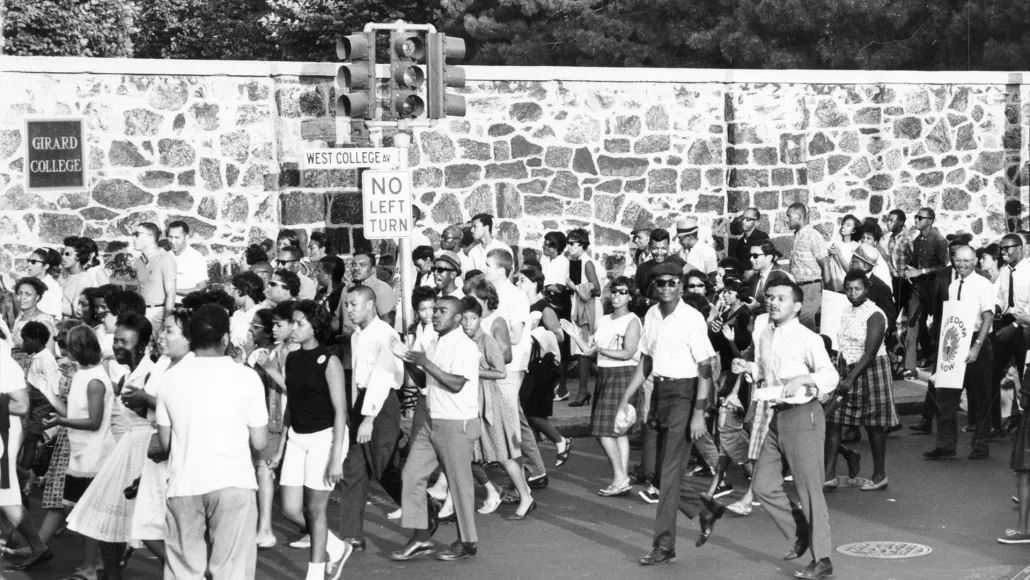Born in 1921, the late Dr. Albert Gaskins was no stranger to discrimination in the United States. “Segregation was there and we had to learn how to deal with it,” Gaskins reflected. His experience was familiar to many Black Americans of his time. Gaskins, who earned his M.D. in pediatrics, recalled attending segregated schools and being kicked off the bus after refusing to sit in the back.
Despite being confined in a culture of discrimination and limited opportunity, Gaskins was resolute. The circumstances in which he found himself would not deter him from achieving his life’s goal: serving others through medicine and education.
“I think the little key thing [is] helping others,” shared Gaskins. “[That's] the basic bottom line of being not just a good doctor, but a good person.”
As a child in Washington, D.C., Gaskins recalled living next door to a physician named Dr. Stratton, who always left the house carrying a medical bag. Feeling inspired, Gaskins recalled, “When [Dr. Stratton] would come back, [you] could see he was tired … but he had the ability inside to continue to move forward. That’s what I want[ed] to be.”
Gaskins attended Howard University for which he credits the mentorship of his teachers, including Dr. Charles Drew — a pioneering surgeon and researcher regarded as the “father of blood banking” — for helping him find his passion in medicine.
“The teachers were wonderful,” Gaskins reflected. “They always helped you … see the correct way to go.”
Drew took note of a curious Gaskins gazing through a microscope to study the effects of Vitamin E on a chick embryo, and encouraged him to apply to medical school. “[Dr. Drew] was always interested in how people were learning things,” shared Gaskins. “You could tell he was trying to bring something out of you that would be helpful.”
In 1948, Gaskins married fellow Howard student Novella Markham, and three years later, moved his new family to Philadelphia — home to segregated Girard College, a private boarding school founded exclusively for white male orphans.
Gaskins, who settled in a white neighborhood, was cautious: “It worked out because we went very slowly and we were positive. … [The neighbors] realized that and … opened up.”
Soon, ever invested in his new community, Gaskins would open the first of three private practices. But, as Gaskins came to find, the racial discrimination at nearby Girard College weighed heavily on the city.
After the 1954 Brown v. Board of Education ruling, six Black boys were denied admission to Girard College. The school’s leadership — quick to act to preserve its status as a segregated institution — appointed 13 private trustees, rendering the school a private entity. Girard’s enrollment practices were no longer governed by the Brown decision.
The school’s resistance to integration inspired Philadelphia civil rights activists to action. Cecil B. Moore, President of NAACP’s Philadelphia chapter, led the charge to integrate the school. Gaskins recalled, “[Moore] wanted to open up and show the world what you have here, the people that you are denying, and how we can help to change that.”
For months, protestors marched around the school’s towering walls and down Broad Street toward the Navy Yard to garner attention from the press. Gaskins participated in some of these demonstrations. The groundswell of support for the protests gained media coverage, and not long after, the attention of none other than Dr. Martin Luther King Jr.
The walls around Girard College were “a kind of Berlin Wall to keep God’s colored children out,” King remarked.
The protests and a successful lawsuit challenging the college’s admission policies helped bring to conclusion a 14-year process to integrate the school.
Following the desegregation of Girard College, Gaskins became the school’s medical director. Later, he would become President of the Medical Society of Eastern Pennsylvania, a member of the American Academy of Pediatrics, and founder of the Coalition of Black Pediatricians of Philadelphia.
"It wasn’t easy, and it didn’t seem to be working sometimes,” Gaskins reflected on his experience marching for Girard College’s desegregation.
But we found out, if you keep going and you’re going in the right direction, it’s gonna work.
Dr. Albert Gaskins
Fueled by an inherent desire to help others, Gaskins championed equal access to education and opportunity in America.
Gaskins, who passed away Feb. 6, 2020, at age 99, reflected: “There are those mountains to climb and rivers to swim, but once you have made that one achievement of getting that diploma that you worked hard to get … [it will grant] you the ability to get where you wanted to go.”
Comcast NBCUniversal’s Voices of the Civil Rights Movement platform honors the legacy and impact of America’s civil rights champions. Watch Voices’ full interview with the late Dr. Gaskins, and more than 18 hours of firsthand accounts and historical moments, online and on Xfinity On Demand.
